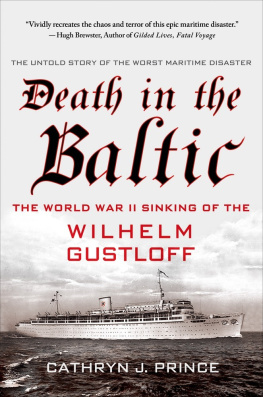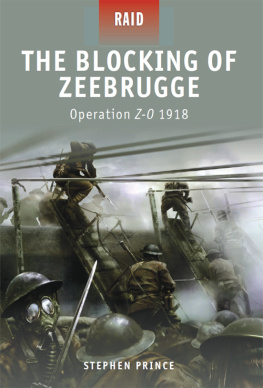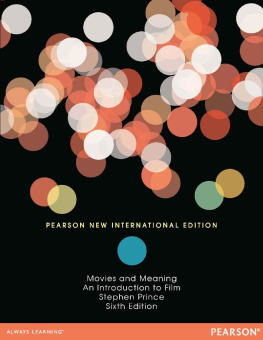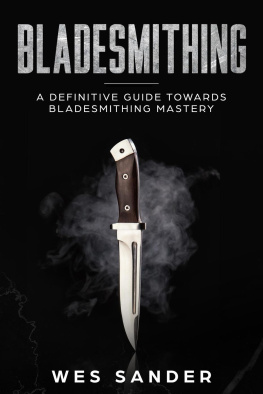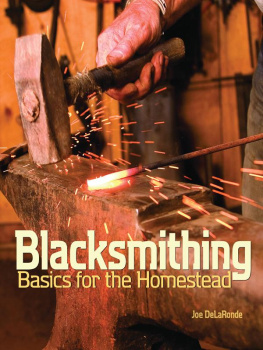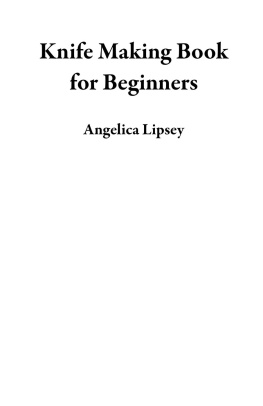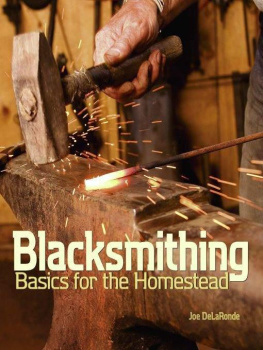Blacksmithing Made Easy
Comprehensive Forging for Beginners Guide on How to Master the Art of Bladesmithing, Knife Making and Knife Engineering To Ultimately Make Cool, Out Of This World Blacksmithing Projects
Charles Prince
Introduction
Do you know where the knife originated? Did you also know that more than 2,000 years ago, there was a stone-age era where hominids shaped stones into tools used for cutting and digging?
While you may not be in touch with the past culture on knife making, the knife is one of a few ancient tools not replaced by other technologically advanced gadgets, which has been the case with most other tools replaced by technologically advanced models.
The knife has retained its usefulness as a simple blade used to carry out many tasks. This ancient, basic tool still has uses in kitchens and various other working spaces. You can carry it with you wherever you go, and it could save you from an unpleasant situation, especially if you love outdoor adventures.
Would you like to learn how to make a knife? Do knives fascinate you, and you would like to go a step further and make different types of knives? If so, youre reading the right book.
This guidebook will discuss the blacksmithing tools, strategies, and ideas you need as a beginner to create knives, including how to set up your workshop space and fashion different knife designs.
This comprehensive guide will do more than teach you how to make knives; it will also inspire you to create many other top-notch blacksmithing projects. After mastering the skills you will learn from this eBook, you may eventually discover that you want to turn your hobby into a money-making project.
Lets begin so you can discover more about knife making and become a master blacksmith.
PS: Id like your feedback. If you are happy with this book, please leave a review on Amazon.
Please leave a review for this book on Amazon by visiting the page below:
https://amzn.to/2VMR5qr
Table of Content
Chapter 1: A Brief History Of Blacksmithing
In the stone-age period, man used stone tools to complete various tasks such as digging and cutting.
Hand-ax stone tool in early Stone Age Europe
Early man created stone tools such as the hand-ax using a hammer-stone to strike or chip off flakes from rounded pebbles or large flakes. Before the metalworking age, that was a universal technology in many parts of the world, including Europe, North America, and India.
Different types of Hammer-stones
Shaping a stone into a cutting tool required great skill and extra caution because fashioning them could also easily destroy these tools. The primary disadvantage with stone tools is that they would not last long and needed frequent shaping and carving to work correctly.
Around 1200 BC, man discovered the art of smelting bronze to make tools. This technology further evolved when man innovated smelting pots that could withstand temperatures high enough to forge iron into tools.
An antique lead melting pot
The smelting process involves retrieving metal from its ore by heating it above the melting point in the presence of an oxidizing agent like air. This discovery, and the easy availability of iron ore, transformed how humans made usable tools across different cultures in many parts of the world.
He (man) then formed new tools, including metal axes used for clearing land for agricultural use and swords used as weapons in warfare.
th century B C Iron Swords from Italy
Blacksmithing continued evolving differently in various parts of the world. The anvil, the main tool used in blacksmithing, is a good example of how this trade has evolved. An anvil is a metalworking tool made from large blocks of metal with top surfaces that are flat on which another object gets struck, formed, and shaped.
Anvil
London pattern anvil
The first anvils were from primitive objects, mainly stone, usually a slab of rock. The anvil then graduated to a metal one, made from bronze, followed by wrought iron, and, lastly, steel. Steel is the most preferred metal used today for making anvils. Over the centuries, the shape of the anvil has evolved from just a simple slab to become the anvil known today as the London Pattern that became popular in the 1800s.
While its size and length have changed with time in different parts of the world, the anvils standard design consists of a horn, a face, a step, a pritchel hole, and a hardy hole.
The forge has also improved significantly over the centuries. The early forge was simply a pit of fire fueled by charcoal and motivated to burn with air from a pair of bellows made from leather and wood used to blow air into the fire to increase the temperature suitable enough for melting iron.
blacksmiths working old fashioned bellows
With time, this type of forge became raised a little higher off the ground. Coal eventually became the most common form of fuel used in the forges connected to blast pipes.
Today, the situation is slightly different as blacksmiths use propane gas and acetylene gas in their forges. An electrical forge is one of the latest innovations:
propane forge
mini electric forge
Historically, blacksmiths used iron wrought, a pure form of iron with very little added carbon. Today, however, it is difficult to find pure wrought iron. Therefore, blacksmiths use a type of iron called mild steel. As a result, the term iron gets used for the mild steel that has replaced the pure wrought iron.
As a blacksmithing beginner, its fundamental to understand that because the scarcity of wrought iron means you can use various types of steel for blacksmithing, including carbon steel, alloy steel, and tool steel, to name a few.
Having looked at a brief overview of how blacksmithing has evolved, lets discuss how to set up your blacksmithing workshop space:
Chapter 2: Planning Your Blacksmithing Workspace
Now that you have decided to be a blacksmith, how much workshop space do you need, and how much will it cost to set it up?
You should answer these questions carefully so that your blacksmithing workspace is neither too big nor too small. Your budget is the most determinant factor in the type and size of the workspace you create.


